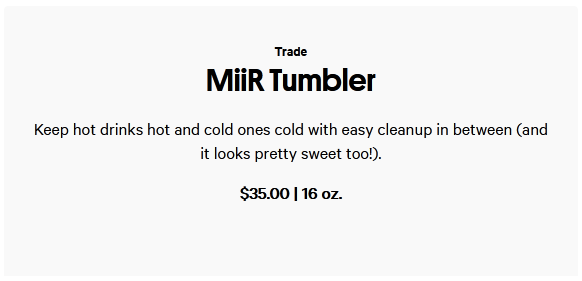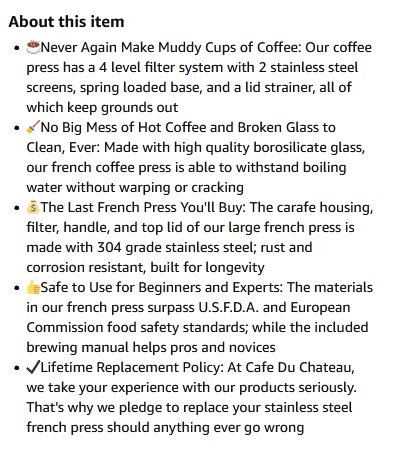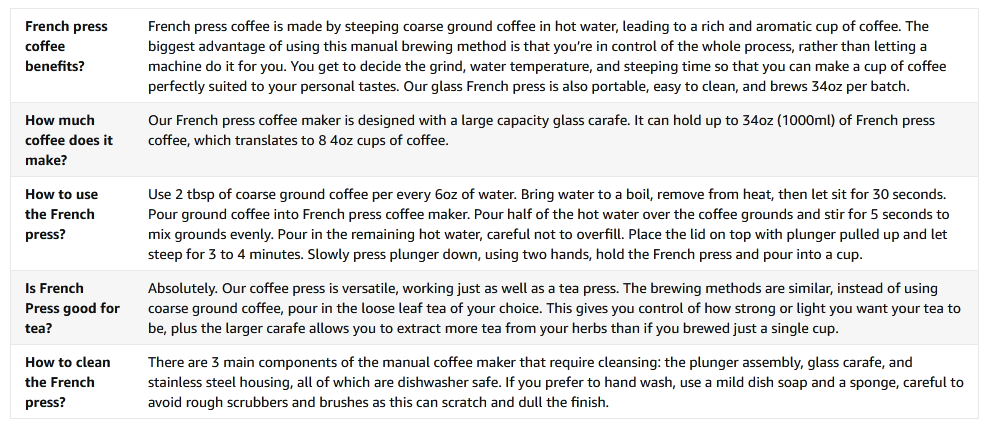Are short product descriptions better than long descriptions?

Why are product descriptions important?
Whether you’re new to direct-to-consumer (DTC) e-commerce or actively searching for ways to overcome low digital sales, you know that product descriptions play a crucial role in the success of any online business.
Here’s why:
- Descriptions introduce, explain, and promote—they sell products
- They’re a vital component on a consumer’s path to purchase
- They elevate the customer experience on your website or online store
- And, last but certainly not least, you need them for SEO
That’s why, at some point or another, you’re going to have to think about how to write the best product descriptions. And a lingering question is always, exactly how long should product descriptions be?
Let’s take a closer look at your options.
Types of product descriptions
The most common types of e-commerce product descriptions include:
- Short descriptions: These are descriptions that are hyper-focused on key points—they cover product fundamentals. A basic description in this category can be anywhere from just one sentence to a single paragraph. It may even be comprised of several bullet points only!
- Long descriptions: These are more detailed product descriptions that can reach up to 600 words—or be as long as necessary to market the product properly. A long product description doesn’t mean one endless paragraph of text – these may be split into several blocks of text or formatted as paragraphs with bullet point sections for highlights. Long descriptions can be found on product pages, landing pages or in sales documentation to name a few.
- Amazon enhanced content: These Amazon descriptions – also called A+ content – give registered brand owners the option to create more engaging product descriptions with a brand story, text placement, and ‘upgraded’ images. A+ content can include:
- Enhanced product descriptions: these provide extra details on product features and uses;
- Brand content: the approved seller can share their brand history, values, and product lines.

Short descriptions vs long descriptions
Since you’re on this page, it’s safe to say you’re probably wondering if it’s better to write short product descriptions or long descriptions. I mean, how long are SEO product descriptions even supposed to be? And is there such a thing as an ideal product description length?
Long story short, it depends.
It depends on multiple factors such as product complexity or if it is a high-involvement purchase. It also depends on where the description will go – the forum / channel used – as well as on buyer journey stage, i.e. where the prospect is in the marketing and sales funnel.
Advantages of short product descriptions:
- Consumers have short attention spans, so lengthy descriptions can be a turn off
- Short descriptions allow you to get straight to the meat of your offer—there’s no waffling
- You avoid distracting (and possibly losing) readers with irrelevant details
- They’re easy to read and allow for skimming
Advantages of long product descriptions:
- Long descriptions allow you to give customers the extra details they may need to reach a decision
- They allow you to be more complete in presenting your offer
- You have the opportunity to incorporate more (relevant) keywords
- You enhance the customer experience
In short, there’s simply no one-size-fits-all rule as to how short or long online product descriptions should be.
The salient point is that great descriptions differentiate your products from all the other options on the market. They also make it profoundly clear what kind of problem the product solves. Finally, effective product descriptions aren’t made up of a clinical list of features—they emphasize benefits.
Factors that have an impact on e-commerce description length
Still unsure how much you should write?
When it comes to deciding on an appropriate length for your descriptions, consider the following:
1. What are you selling?
The length of your product description partially depends on the type of product you are selling.
- Is your product self-explanatory? Is it an everyday item like a dish cloth or ballpoint pen? If you answered yes, then you really don’t need to write paragraphs about it.
- Is your product high-tech, complex, innovative, or disruptive? If you answered yes, then a sentence or two probably won’t suffice! You’re going to have to be more generous with your descriptions.
- Is your product expensive? The more expensive it is, the more justifying you’ll have to do. It isn’t easy getting people to part with their hard-earned money. In fact, for some consumers, it can even hurt.
- Does the purchase involve a one-time payment or will there be recurring payments such as for a subscription box service? If you’re offering something with an ongoing financial commitment then there’s likely to be more that you have to address in your description.
- Does your product require special care, handling, storage, or maintenance? You might need to expound on that in your description.
2. Who are you selling to?
E-commerce descriptions are written for specific buyer personas. Among other demographic factors, you’ll want to look at things like:
- Age: Younger shoppers might have less time, interest, or patience for lengthy descriptions. Older shoppers, on the other hand, might appreciate the extra information or details provided.
- Location: Where are your customers located? If you’re serving international customers with English-language content, note that long descriptions (in what is a foreign language to potential shoppers) might be difficult to read, digest, and understand.
- Devices Used: What are shoppers using to visit or make transactions on your website? Unlike on a PC, someone browsing with a mobile phone might find lengthy descriptions inconvenient as they take up a lot of space and need more scrolling.
3. How much convincing do you have to do?
Put another way: How much information do potential customers need to help them make a decision? This varies from person to person but here are a few factors that will influence product description length.
Are people familiar with this type of product?
Frankly, the less your potential customers know about your product (and its category), the more persuading you’re probably going to have to do.
For example: Take a look at the difference in describing a tumbler – something we’re all familiar with – and a French press coffee maker, which may not be a product everyone knows about.



Is your brand relatively unknown?
If you’re a newcomer in the industry then your descriptions might be longer as you weave in your brand story and values to earn shoppers’ trust—and inspire them to take action.
Are you selling ‘experience’ products like food or cosmetics online?
Then it might make sense to have longer descriptions to ‘recreate’ – in words – the shopping experience one would have in a brick-and-mortar store.
Are your products B2B products?
B2B products tend to be more complex and involve several stakeholders. Customers are also more likely to need detailed product information, which clearly has an impact on product description length. Here’s where you can read more about writing high-quality B2B product descriptions.